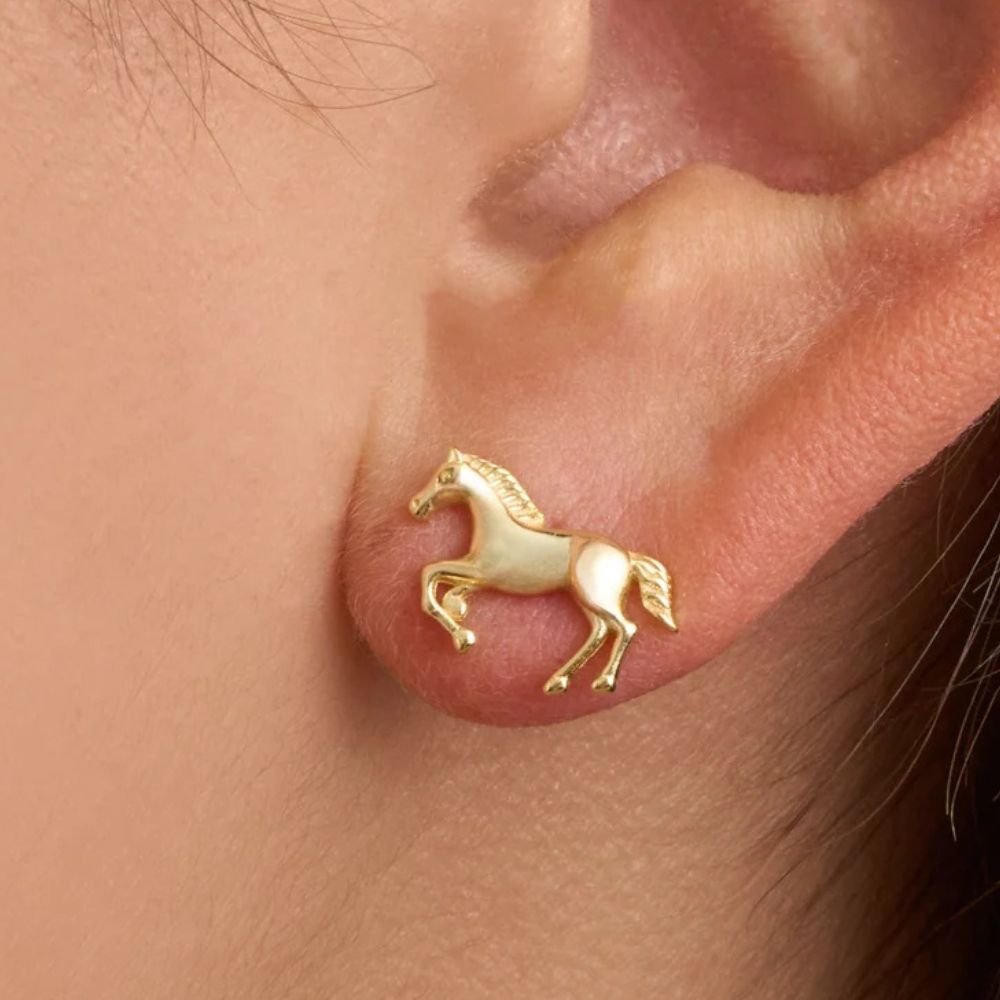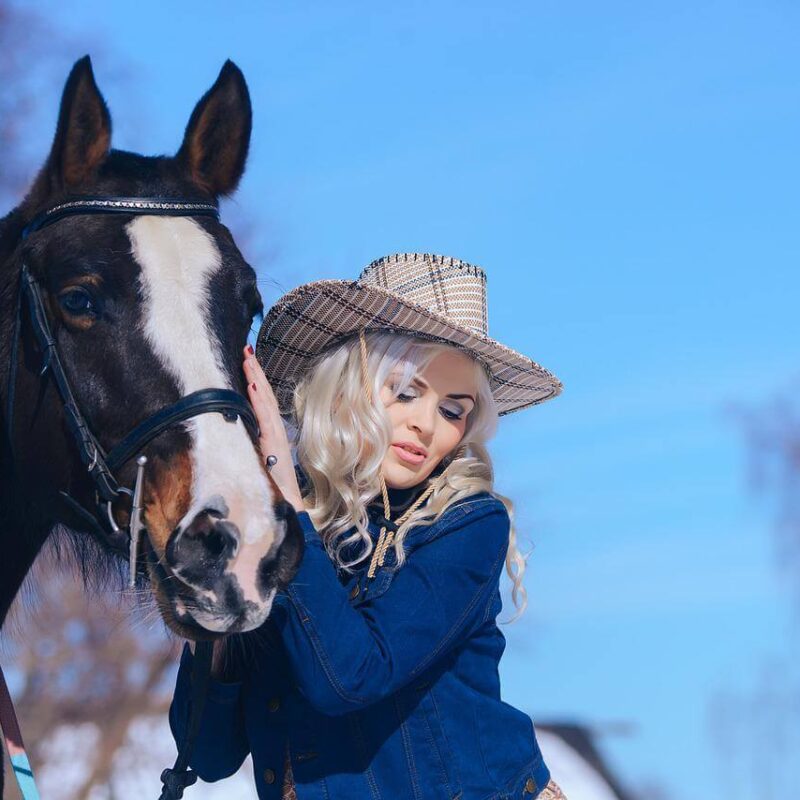
Is Orchard Grass Good for Horses? The Complete Guide to This Premium Hay
Is orchard grass good for horses? Absolutely! Orchard grass for horses has become one of the most sought-after horse forage options in the equestrian world, and for excellent reasons. This premium grass hay offers a perfect balance of nutrition, palatability, and safety that makes it ideal for various horse types—from performance athletes to easy keepers. Orchardgrass hay provides moderate protein levels, lower sugar content compared to other hays, and exceptional digestibility that supports your horse's overall health. Whether you're managing a metabolic-challenged horse or simply want the best nutrition for your beloved companion, understanding the nutritional value of orchard grass will help you make informed feeding decisions. In this comprehensive guide, we'll explore everything from the pros and cons of orchard grass to how it compares with other popular hay types, helping you determine if this is the right choice for your four-legged friend. 🐴
The Nutritional Powerhouse: Understanding Orchard Grass Benefits for Horses
When you're standing in front of hay bales trying to decide what's best for your horse, knowing the nutritional value of orchard grass gives you a serious advantage. This isn't just another grass hay—it's a carefully balanced forage that delivers exactly what most horses need without the extras that can cause problems.
Orchard grass benefits for horses start with its impressive nutritional profile. Typically, orchardgrass hay contains around 8-12% protein, which is perfect for maintaining muscle mass without overloading your horse's system. The fiber content in orchard grass ranges from 60-65%, providing the essential roughage that keeps your horse's digestive system running smoothly. Think of it as the perfect fuel—not too rich, not too lean, but just right for optimal performance.
What really sets this hay apart is the sugar content in orchard grass. Compared to other popular types of hay for horses, orchard grass typically contains lower levels of non-structural carbohydrates (NSC). This makes it an exceptional choice as a low NSC horse hay, particularly valuable for horses with metabolic concerns. We're talking NSC levels that often fall below 10-12%, which is a game-changer for horses that need careful dietary management.
The digestibility of orchard grass is another winning feature. Horses can break down and utilize this hay efficiently, meaning they extract maximum nutrition from every mouthful. This high digestibility translates to better body condition, improved energy levels, and healthier gut function. As renowned equine nutritionist Dr. Sarah Ralston once noted, "The digestibility of forage is just as important as its nutritional composition—it doesn't matter what's in the hay if your horse can't access those nutrients."
Let's talk about the palatability of orchard grass. Most horses absolutely love this hay! It has a sweet, appealing taste that even picky eaters find irresistible. The soft texture and pleasant aroma make meal times something your horse looks forward to. If you've ever struggled with a horse that turns its nose up at other hays, orchard grass for horses might be your solution.
Key Nutritional Components
Protein levels in orchard grass provide adequate nutrition for maintenance, light work, and even moderate performance. The mineral content of orchard grass includes essential elements like calcium and phosphorus, though you'll still need to supplement with a quality mineral program to meet all your horse's needs.
The orchard grass protein level is particularly suitable for easy keepers and horses that don't require high-energy diets. This moderate protein content prevents the excessive weight gain that can plague horses on richer hays while still supporting healthy tissue maintenance and repair.
Orchard Grass vs Timothy Hay: The Ultimate Comparison
The eternal question: orchard grass vs Timothy hay—which one wins? Honestly, both are excellent grass hay for horses, but they have distinct differences that might make one more suitable for your specific situation.
Timothy hay has long been the gold standard in horse nutrition, and for good reason. It's consistent, widely available, and horses generally do well on it. However, orchard grass for horses brings some advantages to the table that Timothy can't always match.
Comparison of horse hay types reveals that orchard grass typically has slightly higher protein content than Timothy (10-12% vs. 8-10%). This modest difference can be beneficial for horses needing a bit more dietary protein without switching to legume hays like alfalfa. The texture also differs—orchard grass tends to be softer and finer-stemmed than Timothy, which many horses find more palatable.
Here's where it gets interesting: the sugar content in orchard grass is often comparable to or slightly lower than Timothy, making both excellent choices for metabolic horses. However, orchard grass tends to maintain better consistency in its nutritional profile across cuttings, which can make feeding management easier.
Drought resistance orchard grass is superior to Timothy in many climates. This resilience means that even in challenging growing conditions, orchard grass maintains decent quality. For horse owners buying local hay, this can translate to more consistent quality throughout the year.
The first cutting orchard grass tends to be stemmy and mature, with higher fiber and lower protein. By contrast, second cutting orchard grass is typically leafier, more tender, and has better nutritional density. Many equestrians prefer second cutting for its superior quality and palatability. Mature orchard grass hay works wonderfully for easy keepers, while immature orchard grass hay suits horses with higher energy demands.
When to Choose Orchard Grass Over Timothy
Choose orchardgrass hay when:
-
Your horse needs slightly more protein than Timothy provides
-
You want hay with better drought resistance and consistency
-
Your horse is a picky eater who prefers softer, more palatable hay
-
You're managing a horse with metabolic issues and need reliable low NSC horse hay
Both hays excel as forage for insulin resistant horses, making the choice often come down to availability, price, and your horse's personal preferences.
Perfect for Easy Keepers and Metabolic Horses
If you've ever dealt with an easy keeper—those horses that seem to gain weight just by looking at grass—you know the struggle is real. Orchard grass for easy keepers has become the go-to solution for many frustrated horse owners, and the results speak for themselves.
Is orchard grass safe for horses with metabolic issues? Absolutely, and it's often recommended as a first-line dietary intervention. The feeding orchard grass to horses with conditions like insulin resistance, Cushing's disease, or laminitis has shown excellent results in clinical settings. In a 2023 study from the University of Kentucky, researchers found that horses with metabolic syndrome maintained better body condition and glucose levels when fed properly tested orchard grass compared to mixed grass hays.
Orchard grass for laminitic horses offers hope for owners navigating this devastating condition. Laminitis, often triggered by excess sugars and starches in the diet, requires careful forage selection. The naturally lower NSC content in quality orchard grass reduces the dietary triggers that can precipitate laminitic episodes. As Dr. Frank Gravlee, a renowned equine veterinarian, states: "Proper forage selection is the cornerstone of managing metabolic horses. Low-NSC hays like orchard grass can make the difference between success and failure in these cases."
Managing Metabolic Horses with Orchard Grass
Feeding horses with metabolic issues requires attention to detail. While orchard grass benefits for horses with metabolic concerns are significant, you must still test your hay. Even orchard grass can have elevated sugars depending on growing conditions, cutting time, and storage.
How much orchard grass to feed a horse depends on body weight and condition. Generally, horses need 1.5-2% of their body weight in forage daily. For a 1,000-pound easy keeper, that's 15-20 pounds of hay daily. Split this into multiple small meals to keep the digestive system happy and reduce metabolic spikes.
Feeding Guidelines and Best Practices
How to Introduce Orchard Grass to Your Horse's Diet
Choosing the right hay starts with understanding your horse's specific needs, but introducing any new forage requires patience. Never switch your horse's hay abruptly—the equine digestive system thrives on consistency and rebels against sudden changes.
Start by mixing small amounts of orchard grass for horses with their current hay, gradually increasing the proportion over 7-10 days. This slow transition prevents digestive upset and allows the gut microbiome to adjust to the new forage type.
Feeding schedule for horses should prioritize free-choice or frequent small meals rather than two large feedings. Horses are designed to graze continuously, and their stomachs produce acid constantly. Providing consistent forage access prevents ulcers and maintains optimal digestive health.
Quality Matters: Evaluating Your Orchard Grass
Hay quality indicators tell you whether you're getting premium orchardgrass hay or subpar forage. Here's what to look for:
-
Color: Good orchard grass should be green to slightly golden, never brown or bleached
-
Smell: Fresh, sweet aroma—musty or moldy smells indicate poor storage
-
Texture: Soft and pliable, not brittle or dusty
-
Leaf-to-stem ratio: More leaves mean better nutrition and palatability
-
Absence of weeds: Quality hay has minimal weed content
The orchard grass seed head appearance can indicate maturity at cutting. Hay cut before seed heads emerge tends to have better nutritional value and palatability. Once seed heads develop, the plant's energy goes into reproduction rather than maintaining nutrient-rich leaves.
Orchard grass hay analysis is non-negotiable for horses with special dietary needs. Testing costs $30-50 but provides invaluable information about protein, fiber, sugar, starch, and mineral content. For metabolic horses, this investment can prevent serious health complications.
Weed control in orchard grass pastures affects hay quality. Premium hay comes from well-managed fields with minimal weed pressure, ensuring your horse gets pure grass hay for horses without potentially harmful plants mixed in.
Special Considerations for Different Horse Types
Best hay for senior horses often includes orchard grass because of its soft texture and excellent digestibility. Older horses with dental issues can chew and process this hay more easily than coarser alternatives. The moderate protein supports muscle maintenance, which becomes crucial as horses age.
Orchard grass for performance horses provides sustained energy without the metabolic highs and lows of richer hays. Performance horses benefit from the steady glucose release that comes from quality grass hay, supporting endurance and consistent energy levels throughout training and competition.
For broodmares, growing horses, and hard-working athletes requiring more calories, you might need to supplement orchardgrass hay with additional protein sources or complementary forages. The beauty of orchard grass is its versatility—it serves as an excellent base diet that you can customize for individual needs.
Understanding the Pros and Cons
The Advantages of Orchard Grass
Let's break down the pros and cons of orchard grass so you can make the most informed decision for your equine partner.
The Pros:
Palatability ranks at the top of the benefits list. Most horses eagerly devour orchard grass, making it easier to ensure adequate forage intake. When your horse actually wants to eat their hay, half your feeding battle is won.
Versatility across horse types means one hay can work for multiple horses in your barn. From easy keepers to performance horses, orchard grass benefits for horses span the spectrum of equine needs.
Metabolic safety makes feeding orchard grass to horses with insulin resistance or laminitis a smart choice. The naturally lower sugar content reduces metabolic stress while providing essential nutrition.
Digestive health improves with the excellent fiber content in orchard grass. This hay promotes healthy gut motility, supports beneficial bacteria, and helps prevent colic and other digestive issues.
Consistent quality from properly managed fields means you're not gambling with each hay delivery. Good orchard grass maintains its nutritional profile more reliably than some other forages.
The Reality Check: Potential Drawbacks
The Cons:
Availability can be challenging in some regions. Not all areas grow orchard grass commercially, potentially limiting access or increasing transportation costs. If you're not in a prime growing region, you might pay premium prices.
Price point typically runs higher than mixed grass hays. Quality orchardgrass hay commands a premium, though many owners find the benefits justify the cost. Expect to pay 20-40% more than standard grass hay mixtures.
Variability exists between cuttings and years. Even from the same field, first cutting orchard grass differs significantly from second cutting orchard grass. Weather conditions, cutting timing, and storage all impact final quality.
Testing necessity for metabolic horses adds cost and planning requirements. While orchard grass for laminitic horses is generally safe, you really should test each hay load to ensure NSC levels remain appropriate.
Orchard grass allergy is rare but possible. Some horses may show respiratory sensitivity to orchard grass pollen or dust, though this is uncommon compared to other hay types.
Making the Decision
Is orchard grass safe for horses? For the vast majority, absolutely yes. The benefits far outweigh the drawbacks for most feeding situations. Consider your specific circumstances: your horse's metabolic status, your budget, local hay availability, and your management capabilities.
Calculate the real cost: if premium orchard grass for horses prevents one laminitic episode or metabolic crisis, it's paid for itself many times over. Prevention always costs less than treatment.
Frequently Asked Questions on Orchard Grass for Horses
Can orchard grass cause founder in horses?
Orchard grass for horses is actually one of the safer hay choices for founder-prone horses. However, any hay can contribute to founder if it contains excessive sugars. Always test your orchardgrass hay for NSC content, particularly if feeding orchard grass for laminitic horses. Properly tested orchard grass with NSC levels below 10-12% is considered safe for most at-risk horses.
How does orchard grass compare to alfalfa for horses?
Orchard grass vs Timothy hay is a common comparison, but comparing orchard grass to alfalfa is apples to oranges. Alfalfa is a legume hay with much higher protein (15-20%) and calcium content. Grass hay for horses like orchard grass provides moderate nutrition suitable for most horses, while alfalfa is typically reserved for performance horses, lactating mares, or horses needing weight gain. The sugar content in orchard grass is also typically lower than alfalfa.
What's the best cutting of orchard grass for horses?
Second cutting orchard grass is generally preferred for its leafiness, palatability, and nutritional density. However, first cutting orchard grass works excellently for orchard grass for easy keepers who need more fiber and fewer calories. Mature orchard grass hay (cut later in the season) has more fiber and less protein, while immature orchard grass hay is more nutrient-dense.
Should I feed orchard grass as pasture or hay?
Both work wonderfully! Orchard grass pasture provides fresh, highly digestible nutrition when properly managed. However, pasture allows less control over intake, which can be problematic for easy keepers. Feeding orchard grass to horses as hay gives you precise control over quantity and quality. Many farms use both—pasture during controlled turnout and hay the rest of the time.
Is orchard grass suitable for senior horses?
Best hay for senior horses often includes orchard grass! The soft texture and excellent digestibility of orchard grass make it ideal for older horses with dental issues. The palatability of orchard grass encourages adequate forage intake, crucial for maintaining body condition in senior horses. The moderate orchard grass protein level supports muscle maintenance without overwhelming aging kidneys.
How much orchard grass should I feed my horse daily?
How much orchard grass to feed a horse depends on body weight and workload. The general rule is 1.5-2% of body weight in forage daily. For a 1,000-pound horse, that's 15-20 pounds of hay. Easy keepers might do well at the lower end, while working horses might need the higher amount. The equine diet and nutrition principle of "forage first" means hay should comprise the majority of your horse's diet.
Can orchard grass hay cause colic?
Quality orchard grass for horses rarely causes colic. In fact, the excellent fiber content in orchard grass promotes healthy digestive function and can help prevent colic. Issues arise from poor-quality hay (moldy, dusty, or containing foreign objects), sudden feed changes, or inadequate water intake. Proper feeding practices with quality orchardgrass hay actually reduces colic risk.
What should I look for in orchard grass hay analysis?
Orchard grass hay analysis should report crude protein (ideally 8-12%), acid detergent fiber (32-38%), neutral detergent fiber (50-60%), NSC content (below 10-12% for metabolic horses), and mineral levels. This data helps you assess whether the hay meets your horse's needs and is safe for horses with metabolic concerns. Testing is especially important for forage for insulin resistant horses.
Final Thoughts
Is orchard grass good for horses? After exploring the nutritional value of orchard grass, examining the pros and cons of orchard grass, and comparing it with other horse forage options, the answer is a resounding yes for most horses. This premium grass hay for horses delivers balanced nutrition, excellent palatability, and remarkable versatility.
Whether you're managing orchard grass for easy keepers, seeking the best hay for senior horses, or need safe forage for insulin resistant horses, orchard grass deserves serious consideration. Its moderate protein, high fiber, and typically lower sugar content create an ideal foundation for equine diet and nutrition across various life stages and activity levels.
The key to success with feeding orchard grass to horses lies in understanding your individual horse's needs, testing your hay, and making gradual transitions. While the palatability of orchard grass means most horses take to it quickly, patience and observation ensure the best results.
Remember, every horse is an individual. What works brilliantly for one might need adjustment for another. Monitor your horse's body condition, energy levels, and overall health as you introduce orchardgrass hay into their diet. With proper management, this exceptional forage can help your horse thrive for years to come.
Express your passion for horses with our gorgeous equestrian-inspired products—because horse lovers deserve beautiful things that celebrate the bond with their equine partners! 🐴💙






















